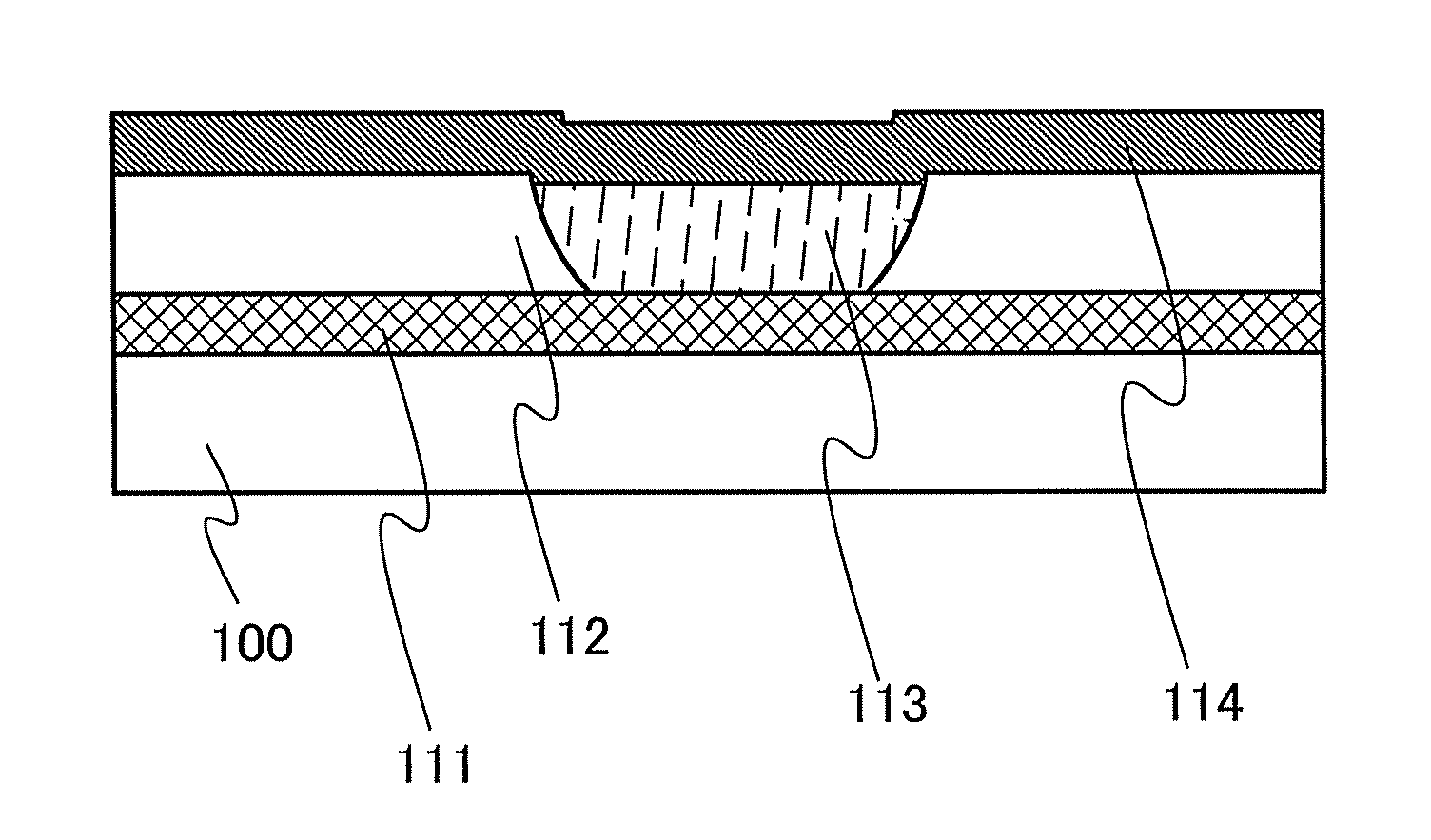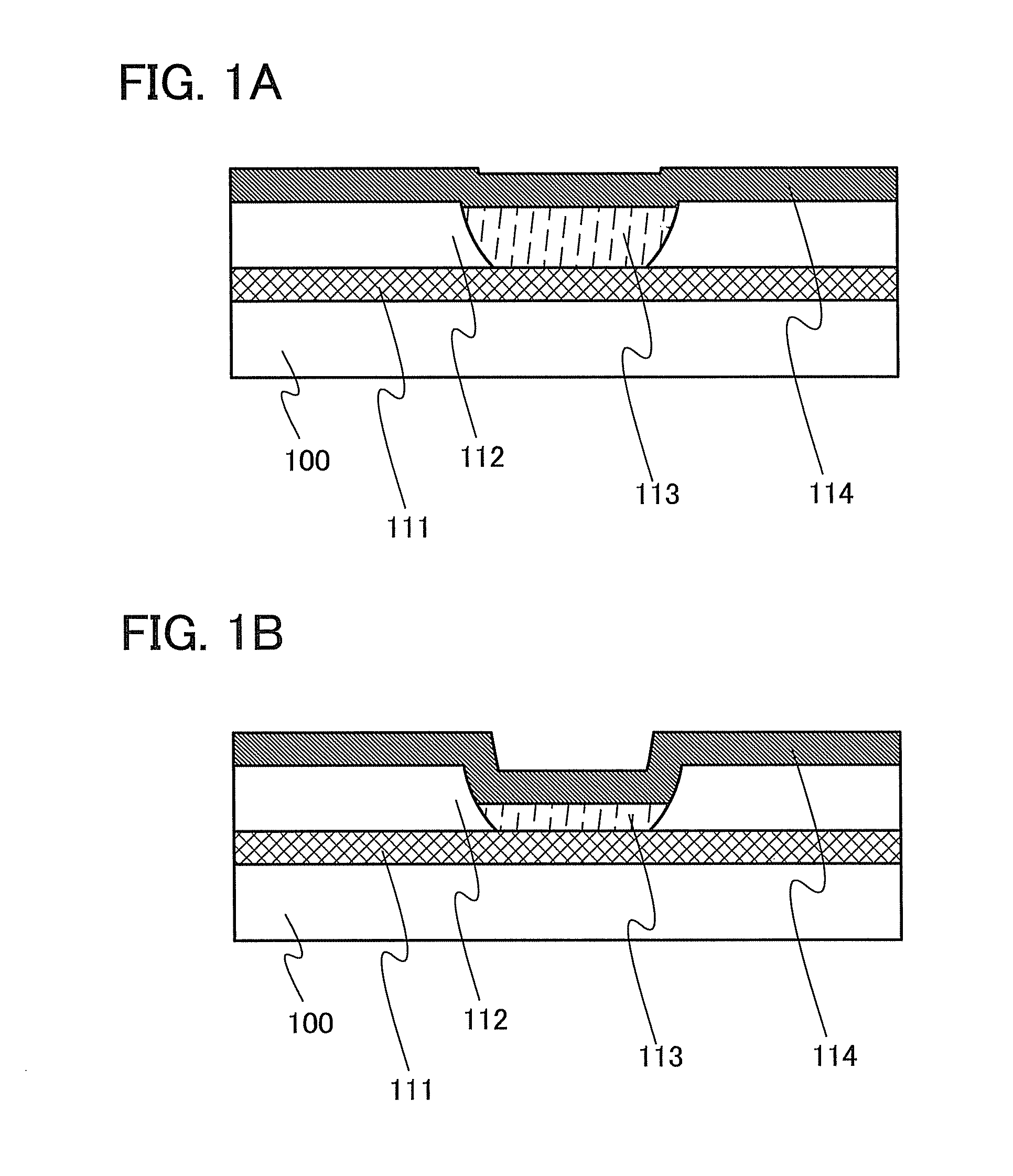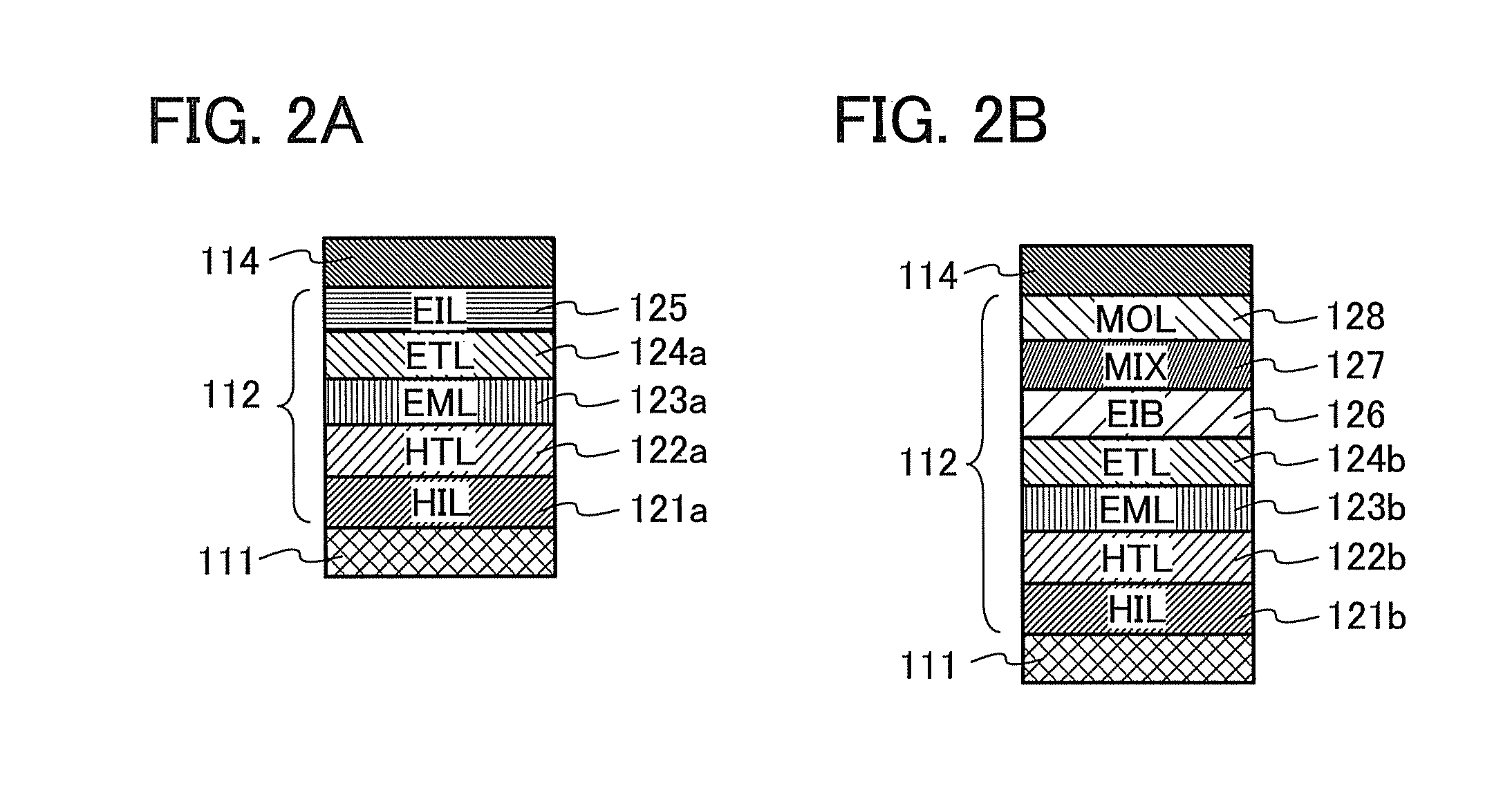Light-emitting element, manufacturing method thereof, and lighting device
a technology of light-emitting elements and manufacturing methods, which is applied in the field of light-emitting elements, can solve the problems of reducing difficult to fill defect portions in the electroluminescent layer with insulating materials, and easy deterioration of the electroluminescent layer, so as to prevent short circuit between the first electrode and the second electrode, the effect of suppressing the emission characteristics of light-emitting elements
- Summary
- Abstract
- Description
- Claims
- Application Information
AI Technical Summary
Benefits of technology
Problems solved by technology
Method used
Image
Examples
embodiment 1
[0029]In this embodiment, examples of light-emitting elements will be described.
[0030]Note that the light-emitting element includes a first electrode, a second electrode, and an electroluminescent layer overlapping with the first electrode and the second electrode and emits light emitted from the electroluminescent layer in accordance with voltage applied between the first electrode and the second electrode.
[0031]Structural examples of light-emitting elements in this embodiment will be described with reference to FIGS. 1A and 1B. FIGS. 1A and 1B are cross-sectional schematic views illustrating the structural examples of the light-emitting elements in this embodiment.
[0032]The light-emitting elements illustrated in FIGS. 1A and 1B each include a conductive layer 111, an electroluminescent layer 112, an insulating material 113, and a conductive layer 114.
[0033]The conductive layer 111 is formed over, for example, a layer 100 over which an element is formed (hereinafter, an element for...
embodiment 2
[0053]In this embodiment, structural examples of the electroluminescent layer of the light-emitting element in Embodiment 1 will be described.
[0054]Structural examples of the electroluminescent layer 112 illustrated in FIG. 1A will be described with reference to FIGS. 2A and 2B as a structural example of the electroluminescent in this embodiment. FIGS. 2A and 2B are each a schematic view illustrating the structural example of the electroluminescent layer in this embodiment.
[0055]The electroluminescent layer 112 illustrated in FIG. 2A includes a hole-injection layer (HIL) 121a, a hole-transport layer (HTL) 122a, a light-emitting layer (EML) 123a, an electron-transport layer (ETL) 124a, and an electron-injection layer (EIL) 125.
[0056]The hole-injection layer 121a is provided over the conductive layer 111 illustrated in FIG. 1A. Note that the hole-injection layer 121a is not necessarily provided.
[0057]The hole-transport layer 122a is provided over the hole-injection layer 121a. Note th...
embodiment 3
[0138]In this embodiment, an example of a manufacturing method of the light-emitting element described in Embodiment 1 will be described.
[0139]As an example of a manufacturing method of a light-emitting element in this embodiment, a manufacturing method of the light-emitting element illustrated in FIG. 1A will be described with reference to FIGS. 3A to 3E. FIGS. 3A to 3E are cross-sectional schematic views illustrating the example of the manufacturing method of the light-emitting element illustrated in FIG. 1A.
[0140]First, as illustrated in FIG. 3A, the conductive layer 111 is formed over the element formation layer 100.
[0141]The conductive layer 111 can be formed by, for example, forming a film of a material applicable to the conductive layer 111 over the element formation layer 100 by a sputtering method. The conductive layer 111 may also be formed by stacking films of materials applicable to the conductive layer 111.
[0142]Next, as illustrated in FIG. 3B, the electroluminescent la...
PUM
 Login to View More
Login to View More Abstract
Description
Claims
Application Information
 Login to View More
Login to View More - R&D
- Intellectual Property
- Life Sciences
- Materials
- Tech Scout
- Unparalleled Data Quality
- Higher Quality Content
- 60% Fewer Hallucinations
Browse by: Latest US Patents, China's latest patents, Technical Efficacy Thesaurus, Application Domain, Technology Topic, Popular Technical Reports.
© 2025 PatSnap. All rights reserved.Legal|Privacy policy|Modern Slavery Act Transparency Statement|Sitemap|About US| Contact US: help@patsnap.com



